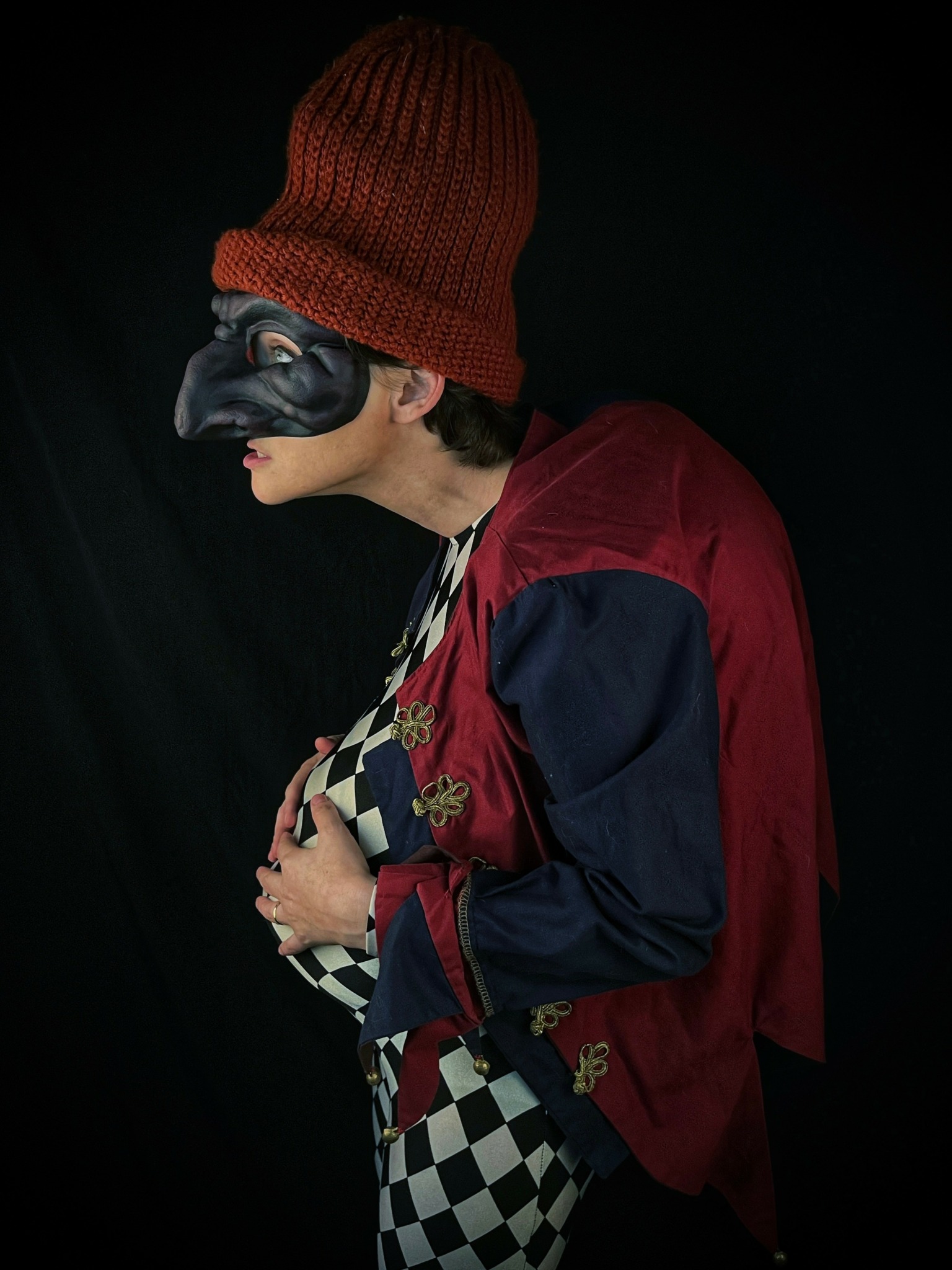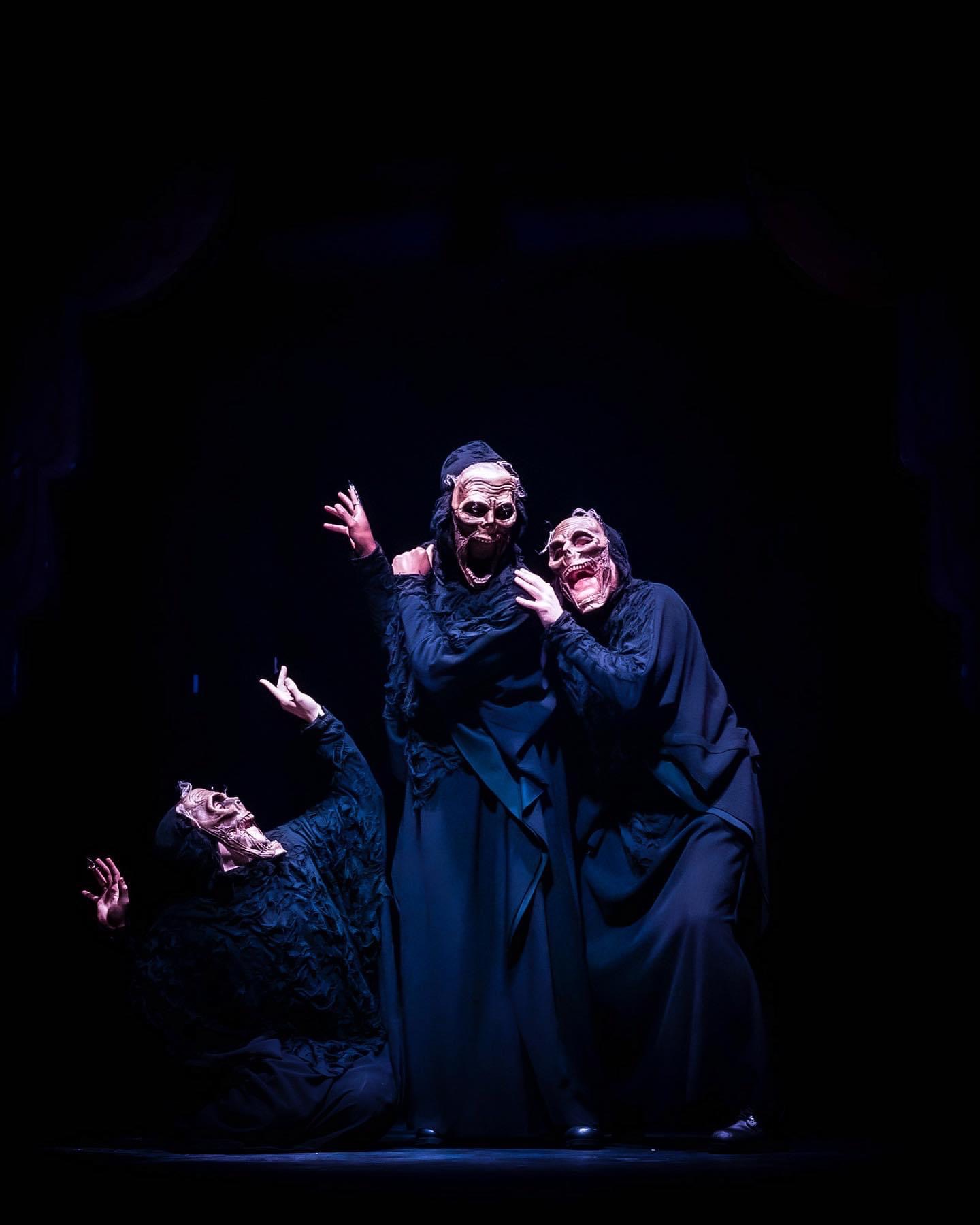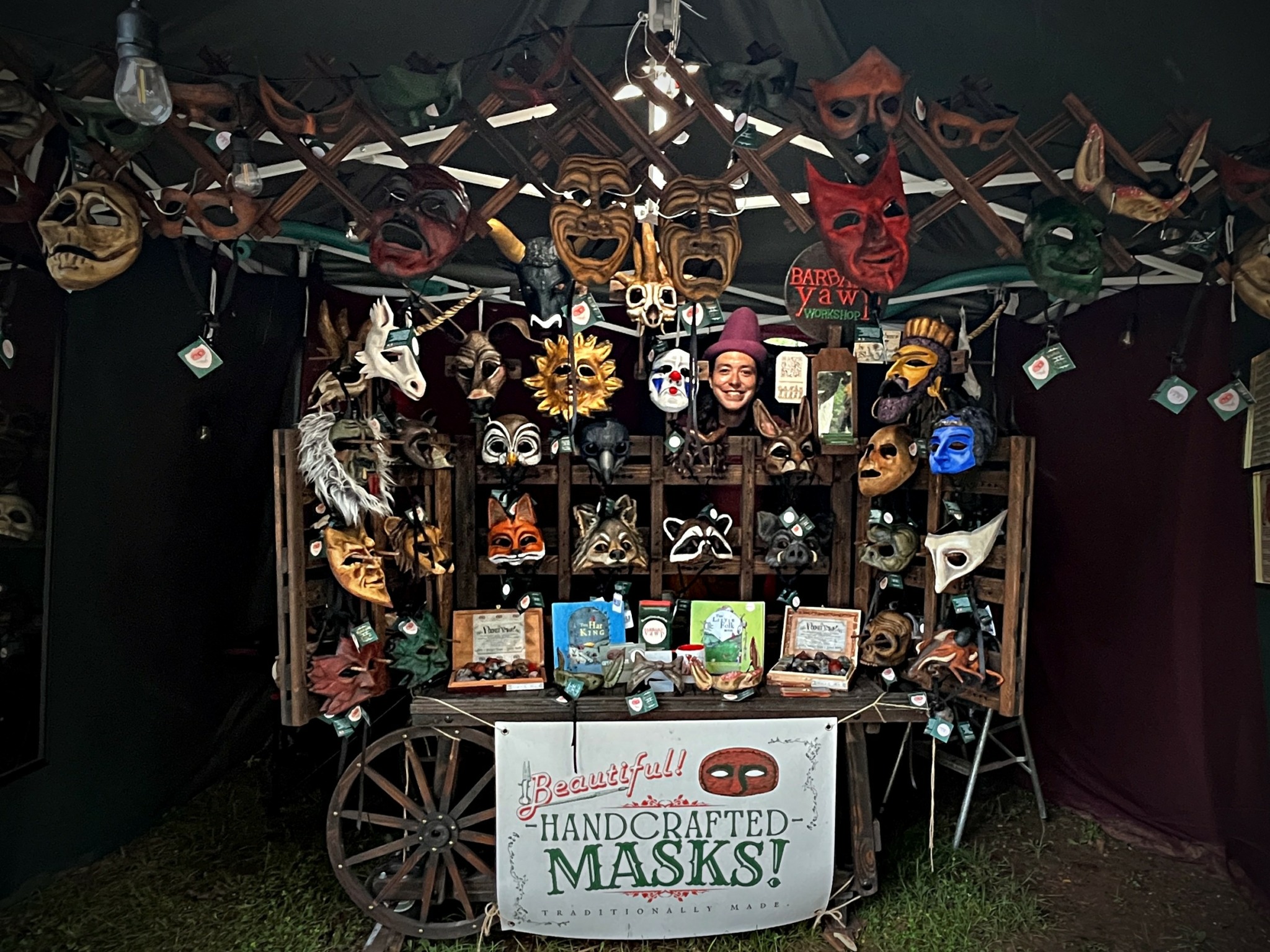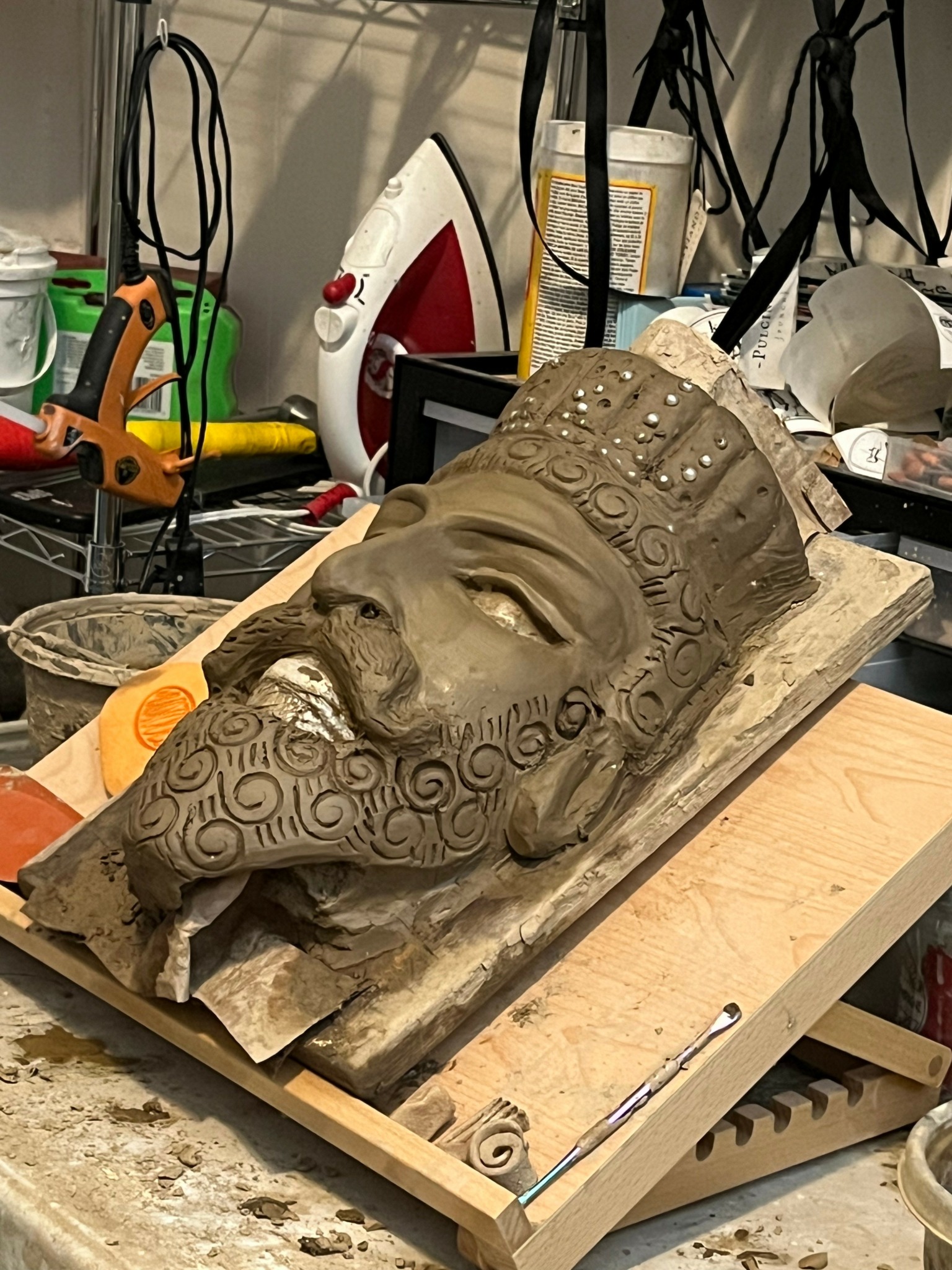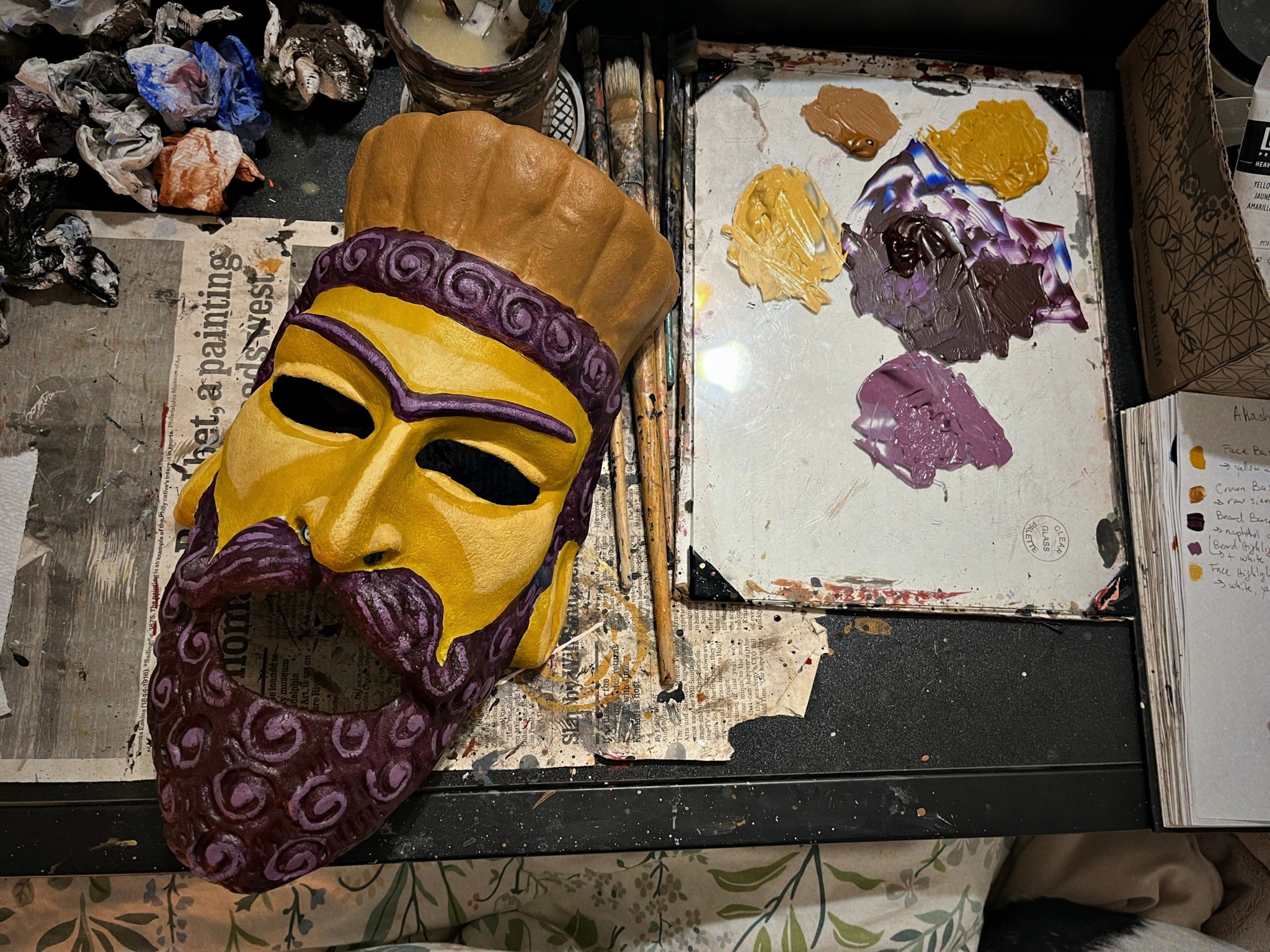We recently connected with Kasidy Devlin Natalie Kropf and have shared our conversation below.
Hi Kasidy Devlin, thanks for joining us today. Can you talk to us about a project that’s meant a lot to you?
One of the most meaningful projects we’ve worked on recently is our collaboration with the Wolf Conservation Center on the Wolf Mask. Last fall we visited the Wolf Conservation Center in South Salem, NY to meet their newest ambassador wolf, Silas. He’s this beautiful grey wolf who is so full of personality. After meeting him, we went back home and got to work on designing a mask that reflected his playful spirit. Once we were satisfied, we got to go back to the WCC to introduce the mask to the people there, and most importantly, to Silas. He had never seen a mask before and was very curious but a little freaked out. It was such an amazing experience. The WCC generously provided a stamp of Silas’s nose for us to put on the inside of every wolf mask, and a portion of the proceeds from every mask sold goes to supporting wolf conservation. We’re so proud to be able to use our art for something that matters, for something bigger than ourselves.

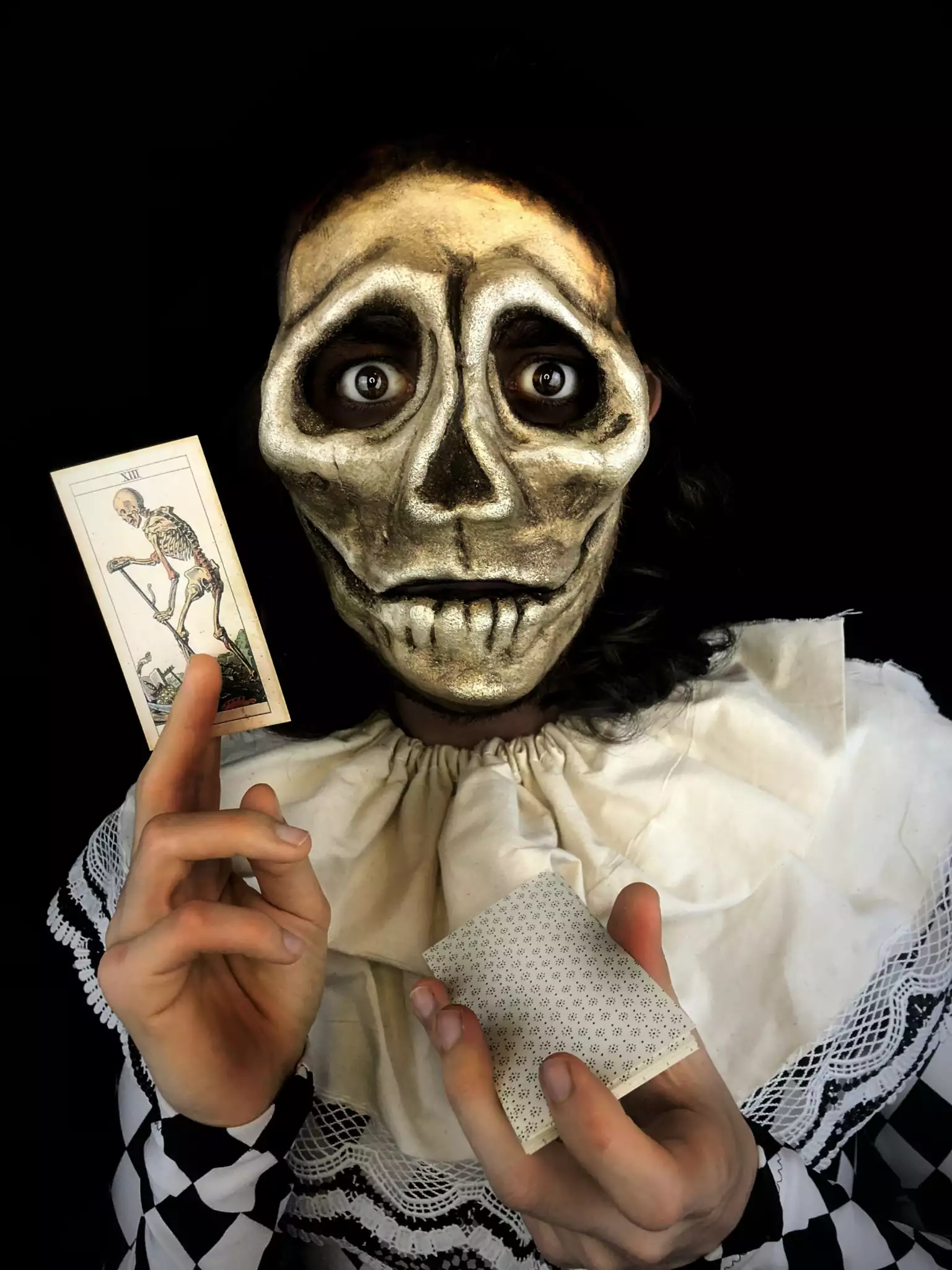
Kasidy Devlin, love having you share your insights with us. Before we ask you more questions, maybe you can take a moment to introduce yourself to our readers who might have missed our earlier conversations?
I’m the co-owner of Barbaric Yawp Workshop, a mask-making business I run with my wife, Natalie. We handcraft every mask ourselves, using traditional techniques, and every piece is rooted in storytelling—whether that’s mythology, folklore, or something as simple and essential as the natural world. We like to think of our work as a bridge between the ancient and the modern, a way of bringing back the forgotten craft of mask-making in an age where most things are mass-produced.
The way we got into this craft wasn’t entirely planned. My wife and I met as actors working in NYC, and we spent about a decade being hired by other people to bring their artistic visions to life. When the pandemic hit, those projects dried up, and we were left thinking about what our own artistic visions looked like. Natalie and I have always been drawn to the artistry of theater and masks, the kind that reveal something about the wearer. I trained in traditional Italian mask-making, so when the time came, we thought why not turn this into something real? Something we can offer the world. And we did.
But not long after we started, our world shifted. Natalie developed a debilitating chronic illness, and it felt like everything was slipping away. It forced us to get creative—not just in our work, but in how we lived. We made our home the workshop, found ways to work from bed, and managed to keep making masks.
What we offer is more than just physical objects; they’re handcrafted stories, steeped in tradition, made for people who appreciate the art of the handmade. We’ve had the honor of collaborating with poets, theaters, musicians, circuses, operas, death doulas, wildlife conservation centers, drag performers, photographers, filmmakers, teachers, and others! Masks are timeless vessels of storytelling, connecting us to the very essence of human expression. They are sacred tools that allow us to travel to realms unseen, embody otherwordly beings, and connect with traditions that stretch back to time immemorial.
What am I most proud of? It’s that we’ve kept going. That we didn’t stop when things got hard. Our masks are proof that something beautiful can come out of difficult times. I want people to know that when they support our work, they’re not just buying a mask—they’re becoming part of a story. One that’s about craftsmanship, resilience, and a connection to both the past and the present.
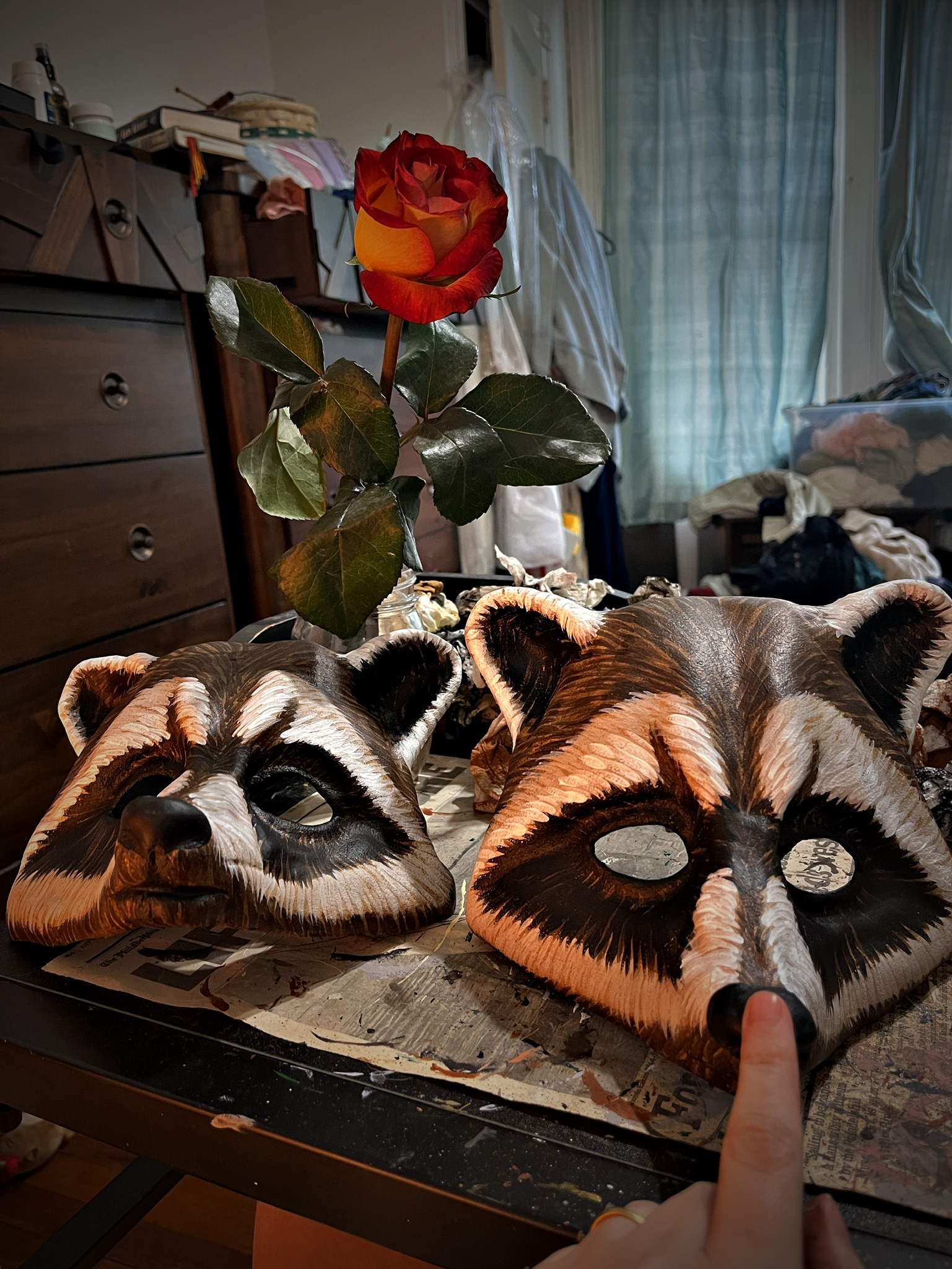

What’s a lesson you had to unlearn and what’s the backstory?
A big lesson I had to unlearn—and I still catch myself working on this—is the idea that there’s not enough for everyone. This scarcity mindset that, especially when you’re running a small business, tells you that you’ve got to hoard every opportunity, every sale, because if you don’t, you might lose your chance. It’s this sneaky fear that whispers, “There’s not enough to go around.”
The backstory? Well, when we started Barbaric Yawp Workshop, we put our hearts into it, but we were always worried about running out of resources—whether that was time, money, or even just creative energy. Natalie and I both felt like if we didn’t grab at every single thing, if we didn’t keep pushing all the time, we’d miss our window, and it would all collapse. It’s not a mindset that leaves a lot of room for breathing or trusting.
But then Natalie got sick. And when you’re hit with something like that—where you suddenly have no choice but to slow down, to adjust—you start seeing things differently. We couldn’t go at full speed anymore, and it felt like the business might slip through our fingers. But something unexpected happened: when we took our foot off the gas, we realized that things didn’t fall apart. People still showed up. We still made sales. The work still came, and it actually allowed us to focus more on quality, more on telling stories with our masks rather than just cranking out the work to keep up.
It was like this unlearning of scarcity, of realizing that there’s actually enough for all of us—enough creativity, enough opportunity. Instead of thinking every other artist, every other maker, was a competitor, I started seeing them as part of a bigger ecosystem. We all create different things, in different ways, and that diversity is what makes the whole thing work.
That shift changed everything. Now, instead of stressing about what we might lose, we focus on what we can give—whether that’s through collaborations, like our work with the Wolf Conservation Center, or just in making masks that carry meaning. I’ve come to trust that when you put something of value into the world, there’s always enough space for it. There’s enough space for all of us.
It’s not easy. I still catch myself falling back into that mindset sometimes, but I remind myself: there’s room. There’s enough. You just have to trust that the resources—whether they’re creative, financial, or personal—are out there, and they’ll come when you need them.
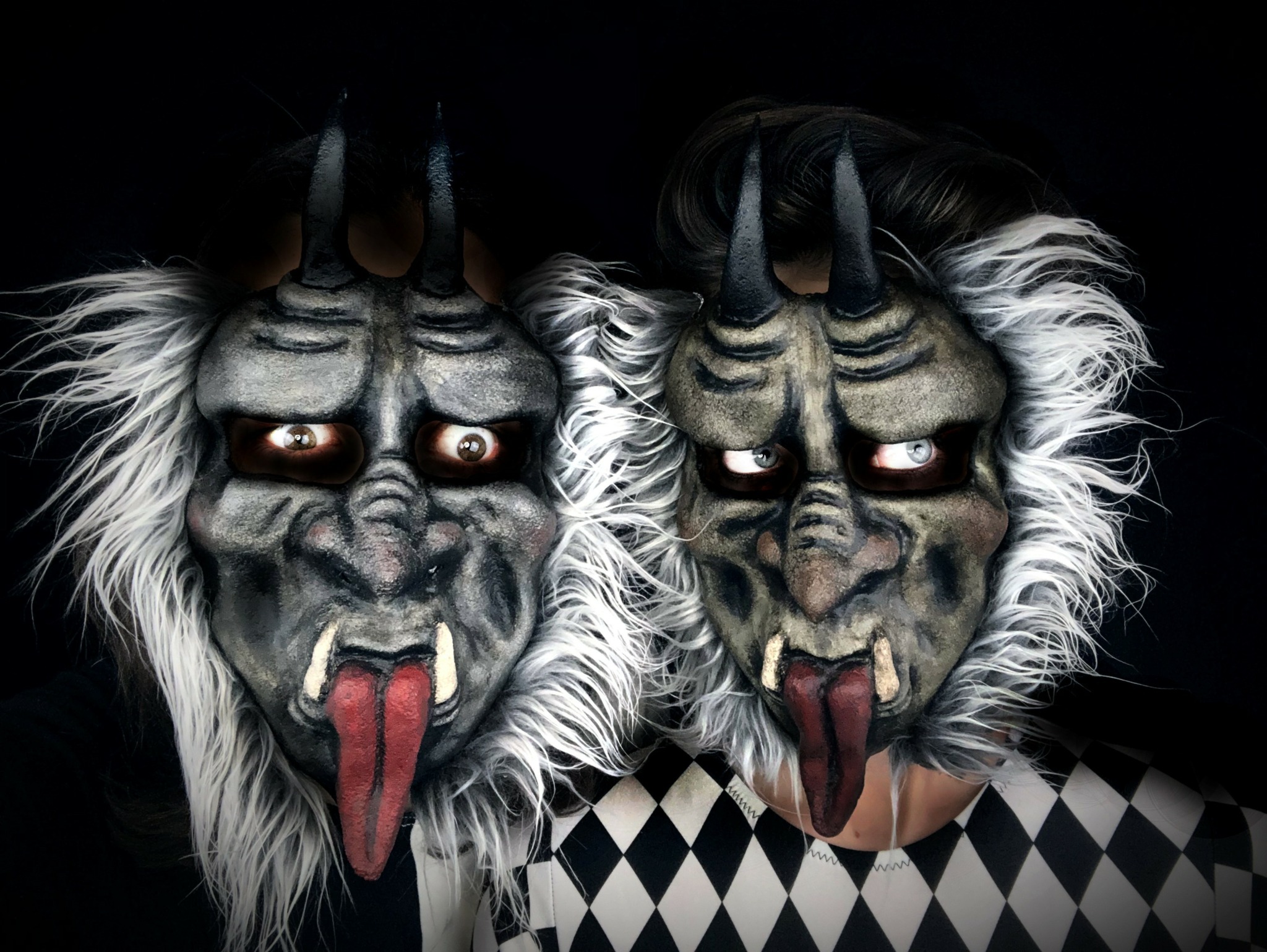
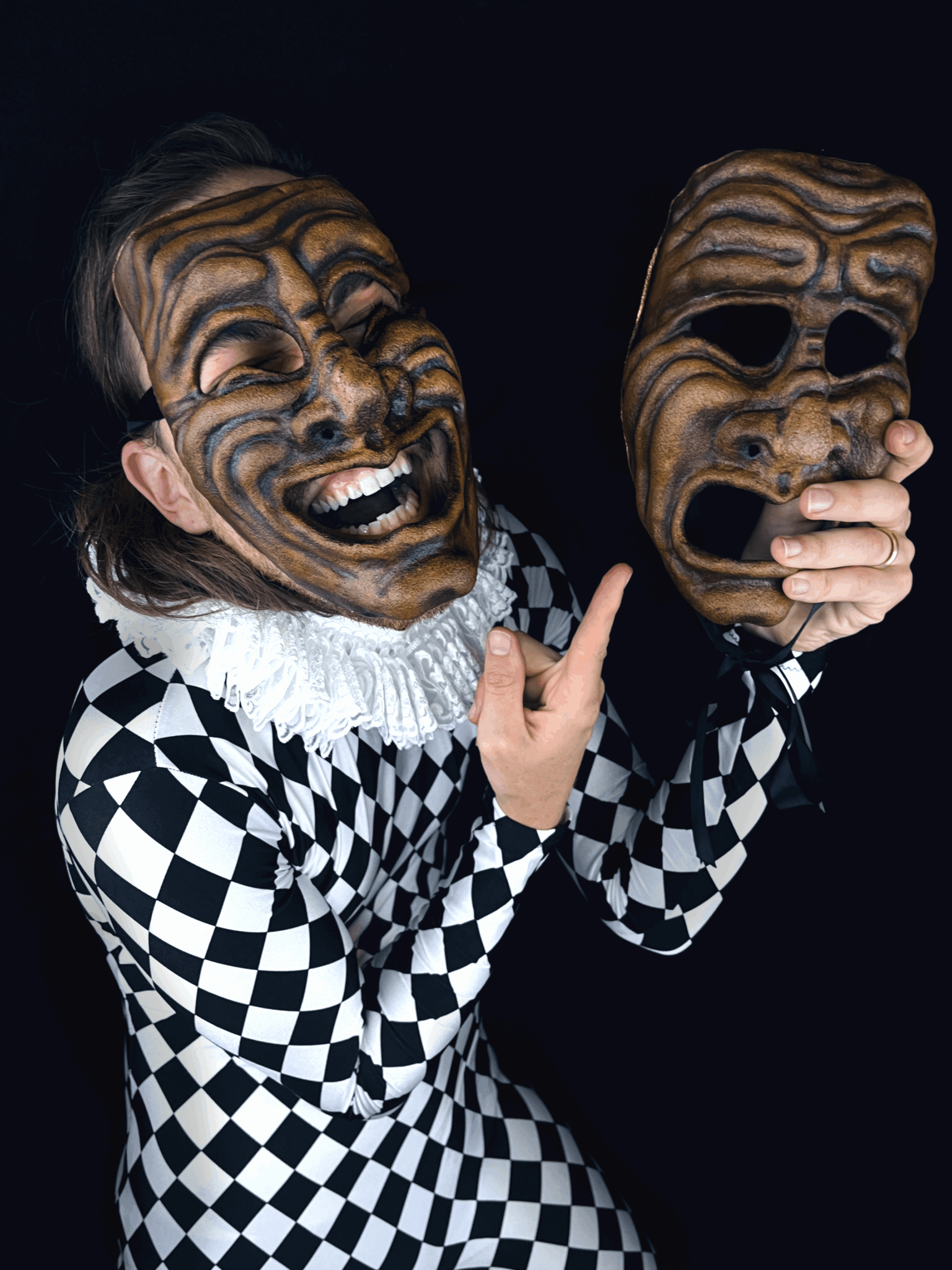
What’s the most rewarding aspect of being a creative in your experience?
For me, the most rewarding aspect of being an artist is the total self-control—being able to answer only to ourselves, without anyone else calling the shots. My wife Natalie and I both have strong feelings about how hard we should work and the level of care we pour into every mask. We never settle on a design, and we obsess over every tiny detail until it feels right. When you make your own work, especially something as personal as handcrafted masks, you get to have that control.
There’s no one telling us to rush or compromise. We can be as meticulous as we want, and that freedom is everything. It’s about the craft—being able to pour our hearts into every piece without having to bend to someone else’s deadline or vision. We get to decide when something is ready, and that’s an incredible feeling. It’s demanding, sure, but knowing that we answer only to our own standards? That’s what makes it so fulfilling. The art, and this life, is ours, and we get to shape it exactly how we see fit.
Contact Info:
- Website: https://www.barbaricyawpworkshop.com
- Instagram: https://www.instagram.com/barbaricyawpworkshop/
- Facebook: https://www.facebook.com/barbaricyawpworkshop/
- Other: https://www.etsy.com/shop/BarbaricYawpWorkshop

